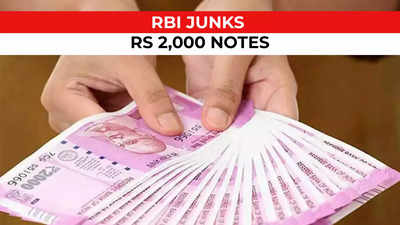
The Reserve Bank of India (RBI) has unveiled its decision to gradually withdraw the ₹2,000 denomination notes from circulation, while assuring that they will remain legal tender. This move is part of the central bank’s ongoing efforts to streamline the country’s currency system and facilitate efficient monetary management.
The ₹2,000 notes were introduced by the RBI in November 2016 as a measure to tackle the cash shortage resulting from the demonetization of higher-value currency notes. However, in recent years, concerns have arisen regarding the circulation and usage of these high-value notes, including the possibility of their involvement in illicit activities such as money laundering and hoarding.
While announcing the decision, the RBI clarified that the withdrawal of the ₹2,000 notes does not signify their demonetization or loss of value. Individuals and businesses can continue to use these notes for transactions, and they will be accepted by all banks and financial institutions for exchange or deposit.
The RBI emphasized that the withdrawal process will be conducted in a phased manner, and the pace of withdrawal will be determined by the demand and supply dynamics of currency notes in the economy. The central bank assured that ample alternative currency denominations, including lower denominations and other electronic payment methods, will be available to facilitate smooth transactions.
The decision to withdraw the ₹2,000 notes aligns with the RBI’s objective of promoting digital transactions, reducing the circulation of high-value currency, and encouraging a more inclusive and efficient payment ecosystem. The central bank has been actively advocating for the adoption of digital payment solutions and the use of lower denomination currency to meet the day-to-day transactional needs of the public.
It is worth noting that the RBI has been consistently monitoring the circulation and usage patterns of different currency denominations to ensure the integrity and stability of the Indian currency system. This latest step to withdraw the ₹2,000 notes from circulation is part of the central bank’s ongoing efforts to strike an optimal balance between convenience, security, and effective monetary management.
While the withdrawal of the ₹2,000 notes may initially require some adjustments, the RBI aims to ensure a smooth transition for businesses and individuals. Banks and financial institutions will play a crucial role in facilitating the exchange or deposit of these notes, and they will continue to accept and provide alternative currency denominations to meet the requirements of customers.
In conclusion, the RBI’s decision to withdraw ₹2,000 notes from circulation while maintaining their legal tender status reflects the central bank’s commitment to fostering a robust and efficient currency system. This move aligns with the broader goal of promoting digital payments and ensuring the availability of lower denomination currency for everyday transactions. As the phased withdrawal process unfolds, the RBI will work closely with stakeholders to minimize disruptions and facilitate a seamless transition for all users of Indian currency.

